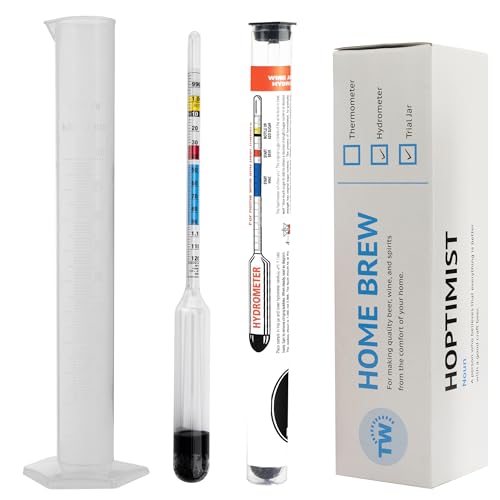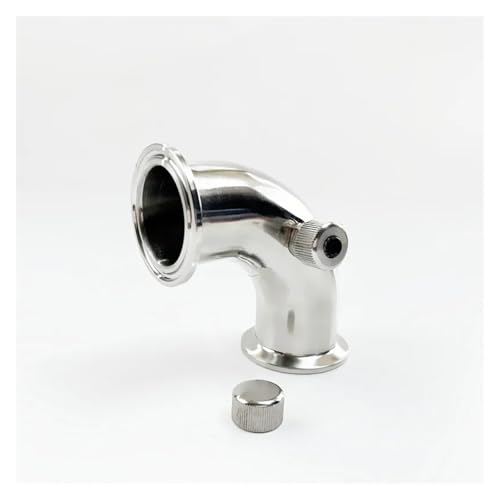strange-steve
3. Addition of calcium salts and flavour ions
Why?
Calcium is an important ion in brewing; it is beneficial for enzyme activity during the mash and is essential for healthy yeast, good fermentation and clarification. The minimum level of calcium in brewing water is debated somewhat; 50 ppm should be considered a bare minimum, however some sources suggest 100 or even 150 ppm as a minimum. The malt does supply some calcium so I usually aim for around 100 ppm [see exception 2].
How?
Calcium is added in the form of gypsum (calcium sulphate) and/or calcium chloride. Which of these salts you decide to use is where the flavour ions, sulphate and chloride, come into play. Hoppy beers benefit from having a higher sulphate content, because this ion gives a dryer finish and it enhances the perception of bitterness in a highly hopped beer. Chloride on the other hand works better in a malty beer because it accentuates sweetness and fullness of flavour.
So put simply, use gypsum for hoppy beers like IPAs and pale ales and use calcium chloride for malty beers like brown ales and Scotch ales. If brewing a more balanced beer like an English bitter, use a combination of the two [see note 7 and exception 3].
The idea is to add enough of these salts to bring your calcium up to around 100 ppm. To do this you obviously need to know how much calcium is in your tap water to begin with, which you can determine by using a Salifert Ca test kit [see note 8]. You may well find that your tap water already has a lot more than 100 ppm of calcium, which is fine, you can still add a little of the appropriate salts for flavour purposes, but I probably would suggest somewhere around 200-250 ppm as an upper limit for calcium.
Use the following information to determine how much of each salt to add:
Gypsum added at a rate of 0.1g per litre adds about 23 ppm of calcium. Use at a maximum rate of 0.5g per litre.
Calcium chloride added at a rate of 0.1g per litre adds about 27 ppm of calcium. Use at a maximum rate of 0.3g per litre.
Putting it all together
So let's look at a couple of examples now which will hopefully make all this a little clearer. I've used slightly more difficult examples to show how they can be treated with the above method. These examples assume you have tested for alkalinity and calcium.
Brewing a stout with low alkalinity water
I'm using the values for Tesco Ashbeck water profile for this because it has a very low alkalinity of about 20 ppm and only 10 ppm calcium. So firstly, as you can see above, a black beer needs an alkalinity of 120 ppm so we need to add 100 ppm. As per the table below, you can see that adding sodium bicarbonate at at a rate of 0.17g/L is pretty close.
Now we need to increase calcium to around 100 ppm and because this is a malty beer, we'll use calcium chloride to do it. Adding calcium chloride at its maximum dosage of 0.3g/L will add about 81 ppm, which when added to the 10 in the base water, gives 91 ppm. Not quite 100, but close enough.
Now just do the simple maths; so if for example you have 12L of mash water that equals 2g of sodium bicarbonate and 3.6g of calcium chloride.
Say you have 20L of sparge water, that will require 6g of calcium chloride. Remember sparge water should always be low alkalinity, which it is in this example, so no alkalinity adjustment is required here.
Also don't forget to add the crushed campden tab, about quarter to the mash water and quarter to the sparge water.
Brewing a pale ale with high alkalinity water
For this example let's assume an alkalinity of 250 ppm and calcium of 100 ppm, and a 100% pale malt grist. So for a pale beer we want around 20 ppm of alkalinity which means removing 230 ppm. This is probably over the taste threshold for lactic acid so I wouldn't recommend using it for this, CRS would be a better choice. Looking at the table below, an addition of 1.2ml/L of CRS will reduce the alkalinity by the correct amount.
As for calcium, although the level is already at the recommended 100 ppm, I'd still suggest adding some gypsum to accentuate the hops. An addition of 0.2g/L will bring the calcium up to around 146 ppm while adding sulphate to make the hops stand out.
So plugging those figures in, a mash water volume of 12L would require 14.4ml of CRS and 2.4g of gypsum. For 20L of sparge water, add 24ml of CRS and 4g of gypsum.
Again don't forget to treat the water with campden tabs.
So that's it, pretty straight forward. Just remember the 3 main points of water treatment, remove chlorine, adjust alkalinity, add calcium salts.
Below, I have included a table to help you work out the required dosage of salts and acids, and below that there are some special cases which differ slightly from the general advice above.
View attachment 23954
Exceptions
1. Cold steeped or late-addition roasted malts
If you are making a dark beer, but not putting the roasted malts in the mash (eg. cold steeping them or adding at mash out or vorlauf) then obviously those malts won't have any impact on the mash pH and so should be ignored as far as alkalinity adjustment is concerned. In other words, if you were to make a porter with cold steeped roasted malts then you would use an alkalinity level appropriate for a pale or amber beer, depending on the grain bill.
2. Pilsner, helles, light lagers
When brewing these types of lightly flavoured beers, it may be a good idea to keep the mineral content low and aim for around 50 ppm of calcium. This is lower than the calcium content of many people's tap water, so it may be necessary to dilute your tap water with low mineral bottled (such as Tesco Ashbeck) or RO water to reduce the mineral content. You may find the beer takes longer to clear if using water with low calcium content, but the lagering process should deal with that.
3. New England IPA
New England IPA is an exception to the "gypsum for hoppy beers" suggestion, because despite being extremely hoppy, it tends to use chloride rich water rather than sulphate. Therefore calcium chloride should be used rather than gypsum as this adds to the full bodied juiciness common to the style.
Notes
1. CRS (also known as AMS) stands for carbonate reducing solution, it is a blend of food grade hydrochloric and sulphuric acids and is readily available from most HB stores.
2. Campden tablets are made from either sodium metabisulphite or potassium metabisulphite, it doesn't matter which you have, they can be used interchangeably. It is also possible to get metabisulphite powder which can be used in the same way (approx. 0.5g is equivalent to 1 tablet).
3. Hardness and alkalinity are not the same, but confusingly, they are often reported in the same units (ppm as CaCO3). So if you have a water analysis which says "hardness: 150 ppm CaCO3" it doesn't mean the alkalinity is 150 ppm. Hardness values aren't really very useful for us, so just ignore it. Get yourself a KH test kit and test for alkalinity yourself. Also note that ppm is the same as mg/L.
4. The Salifert KH kit is designed for aquariums, but is well suited to our needs as brewers. It can be purchased from eBay for about £8. It will tell you the alkalinity value in dKH, however the commonly used unit of measurement in brewing is ppm as CaCO3. You can convert dKH to CaCO3 by simply multiplying by 17.9.(See
HERE for the "How to use Salifert test kits" thread.)
5. Be aware that the relationship between colour and mash pH, for various reasons, isn't quite so clear cut. For example crystal malts are actually more acidic than roasted malts. So this is only an approximation, but it should get you in the right area.
6. Sodium bicarbonate should never be added to sparge water, only to the mash, because sparge water should always be low alkalinity (<30 ppm). The main purpose of alkalinity adjustment is to get the mash pH correct, but using low alkalinity sparge water helps prevent tannin extraction from the grain during sparging.
7. These are only suggestions based on common practice, but don't be afraid to experiment with this. You may well find that you prefer a softer finish in your IPA from using more calcium chloride than gypsum, or that you like a crisp, dry finish in a malty style when you use gypsum. Think of this like seasoning food, there is no right or wrong way, do it according to your personal taste.
8. Often you can find out the calcium level from your water supplier, however it will be a mean value, and like alkalinity, it can vary by aconsiderable amount. Get a test kit and check it yourself.










































